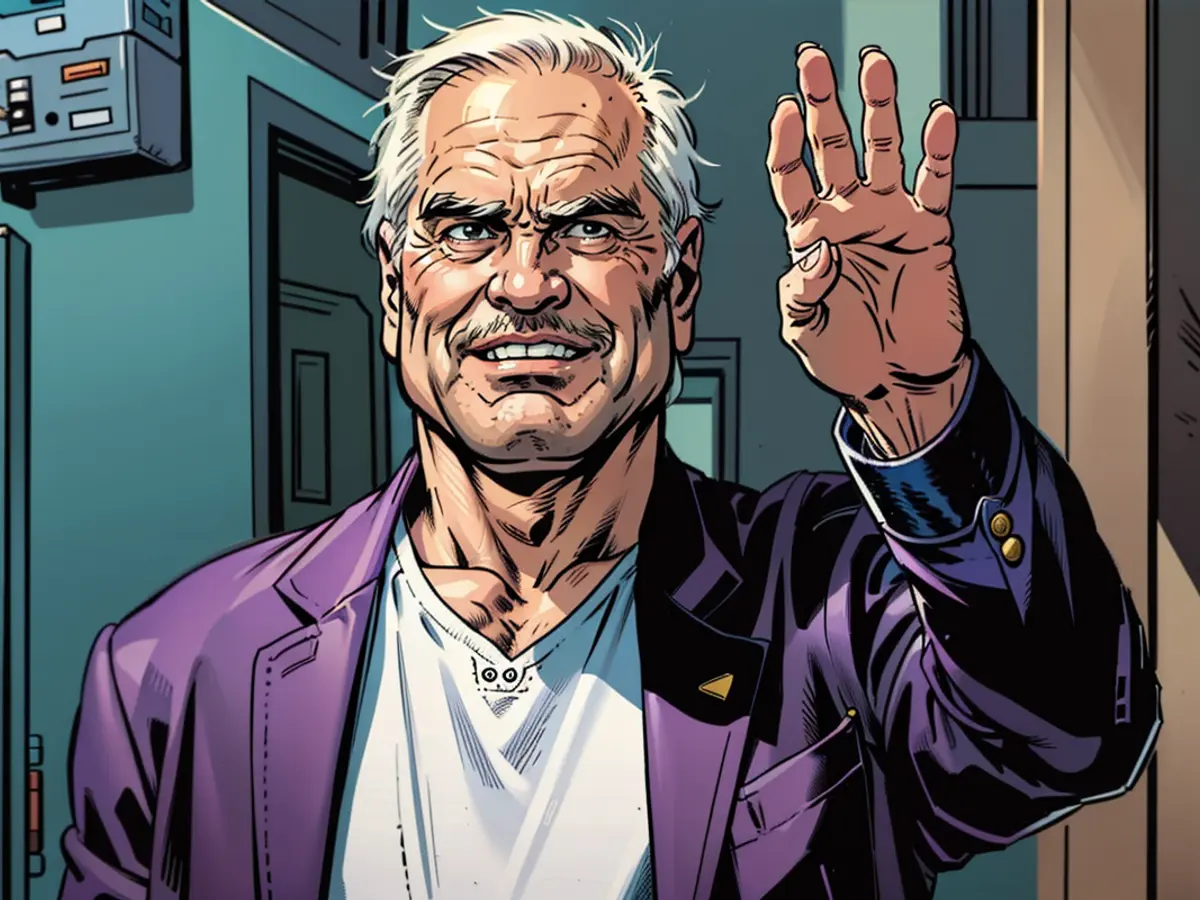chelated Hoff performed at the demise of the Berlin Wall and rescued Baywatch.
With "Knight Rider," David Hasselhoff secured his acting fame in the late 80s, and "Looking for Freedom" marked his initial success as a vocalist. This song, which narrates the 1989 Berlin Wall collapse, is believed to have salvaged his acting career.
Did he resurrect the most iconic TV series of all time, "Baywatch," with his Berlin Wall performance? As per the "New York Post," that's what David Hasselhoff asserts. A fresh TV docu-series about the 90s' cult show reveals captivating details about Pamela Anderson's husband Tommy Lee's envy and the meager pay of the red-suited lifeguards compared to their "Friends" peers.
On New Year's Eve 1989/1990, German excitement over the Berlin Wall's fall knew no bounds. Smack dab in the middle of it all: the ever-jovial American lad, David Hasselhoff. Perched atop a crane above the former no-man's land at the Brandenburg Gate, he led the charge with his catchphrase: "Looking for Freedom." Hasselhoff had recorded his rendition of the hit in 1988 with producer Jack White and topped the German charts with it in April 1989, completely oblivious to its subsequent success. At the time, Hasselhoff was a celebrated star of the TV show "Knight Rider." However, his new NBC series "Baywatch," unfairly failed in the US and was terminated after a single season.
In the wake of his musical popularity, German networks inquired whether Hasselhoff had more "Knight Rider" episodes hidden away. Hasselhoff denied it and instead pointed to his latest series "Baywatch." German and international networks then purchased the series and broadcast it, thus giving "Baywatch" a second chance from 1991 onwards. It went on to become the most successful TV series ever. In the Hulu-aired docu-series "After Baywatch: A Moment in the Sun," Hasselhoff is confident in his proclamation: "Without my Berlin Wall performance, without 'Looking for Freedom,' there would be no 'Baywatch'."
Stories grew increasingly absurd
Initially, it seemed like a colossal fail, but the tides soon changed: "Baywatch" turned into a global hit in its second try. From 1989 to 2001, up to 1.1 billion viewers every week tuned in to watch David Hasselhoff, Pamela Anderson, and the rest on the Malibu beach. Skintight, red bathing suits showcased the female cast members' bodies - frequently even in slow-motion. And the male lifeguards were no less impressing with their chiseled abs. The show evolved into a cult film despite the cast's awareness of the series' sometimes mediocre scripts.
The longer the series lasted, the more ludicrous the plotlines concocted by the series writers became. An instance in point is the episode featuring a voracious octopus that confiscated surfboards belonging to guest star and professional surfer Kelly Slater and held them hostage. In the docu-series, Hasselhoff can only find positives in the show's constant lampooning: "The series wasn't great to begin with, but we managed to make it awesome because of our passion." Even "Baywatch" creator Douglas Schwartz and his team faced mounting criticism, but that had a positive impact, proving to be just the boost they needed: "We became the regular targets of jokes on the 'Tonight Show' with Jay Leno. But his mockery never impacted our ratings, they only ascended."
Salary: $3,500 per episode
Given the unprecedented success of the series, the cast members' salaries appear surprisingly modest. Former "Baywatch" actress and docu-series producer Nicole Eggert exposes that the iconic red-suited lifeguards in Malibu made around $3,500 per episode. "I think Friends cast members were making around a million dollars per episode at the same time," says Eggert. Fond memories of the paydays fled Elena Eleniak's mind: "I was stunned when I first saw my paycheck. I couldn't believe how I was supposed to survive on this little income." And series lifeguard Billy Warlock succinctly stated, "Not a single wealthy Baywatch actor exists—not one."
Next to Hasselhoff, Pamela Anderson likely had the largest share of "Baywatch's" 90s fame. As the series' embodiment, the Canadian-born actress achieved global recognition. It is widely known that her marriage to Motley Crue drummer Tommy Lee in 1995 had significant implications for the series. "It made things more complex for both her and us," remarked Michael Berk, one of the series' creators.
According to the script, Anderson fell for her co-star David Chokachi, who played Cody Madison. Tommy Lee was reportedly extremely jealous, sparking a series of confrontations. Frustrated, Lee tuned up the drama by visiting Anderson's trailer, ultimately damaging it. Berk recalls, "Pam came to me one day and requested us to revise the scene demanding a kiss between her and David. She didn't feel comfortable with it." The writers complied with Anderson's fervent request, instantly transforming the series' romantic arc between Anderson and Chokachi into a friendship. And the viewers remained loyal, embracing their favorite characters until the series' end in 2001.
Despite his initial failure with "Baywatch" in the US, David Hasselhoff attributed its eventual success to his Berlin Wall performance and the subsequent popularity of "Looking for Freedom." He asserted in a Hulu docu-series that without his Berlin Wall performance, there would be no "Baywatch."
Despite their unprecedented success, the cast members of "Baywatch" were surprisingly modestly paid. Former actress Nicole Eggert revealed that the red-suited lifeguards made around $3,500 per episode during the show's run.







